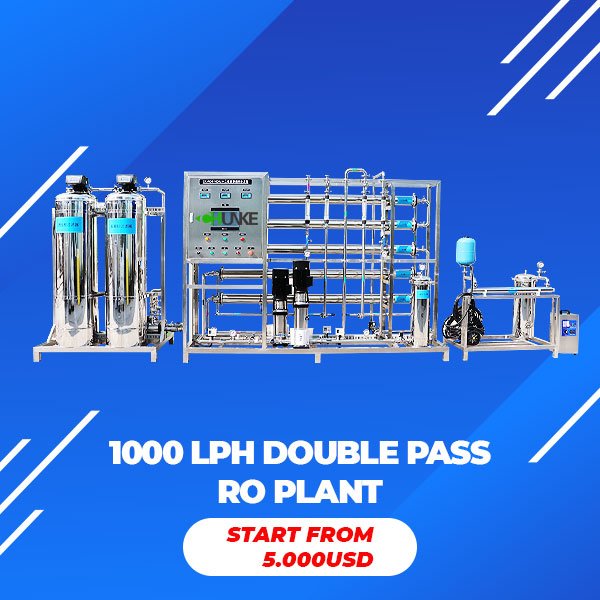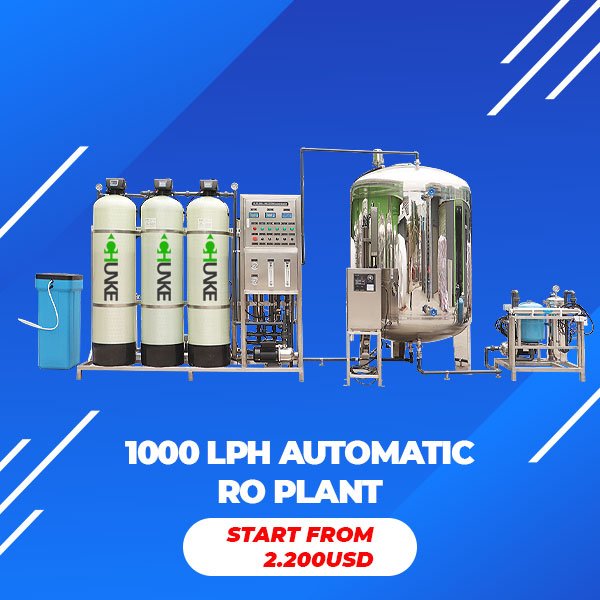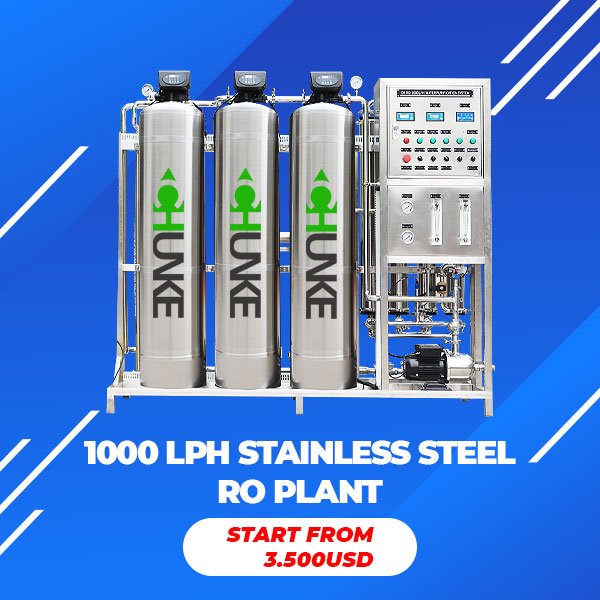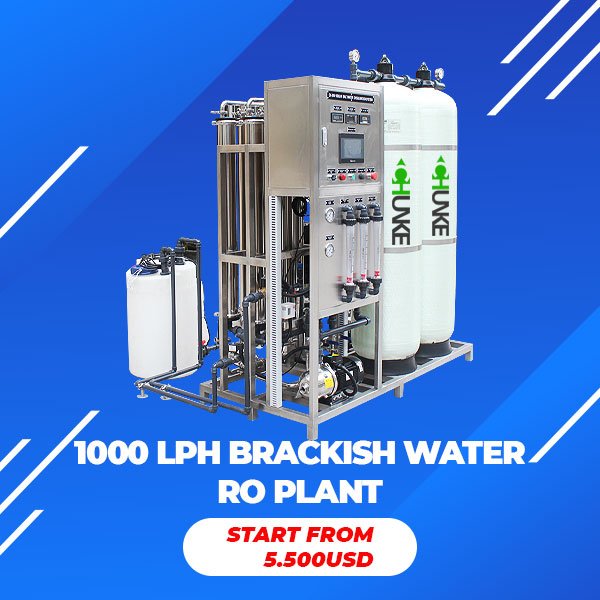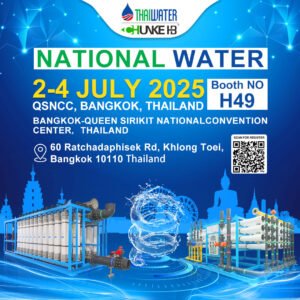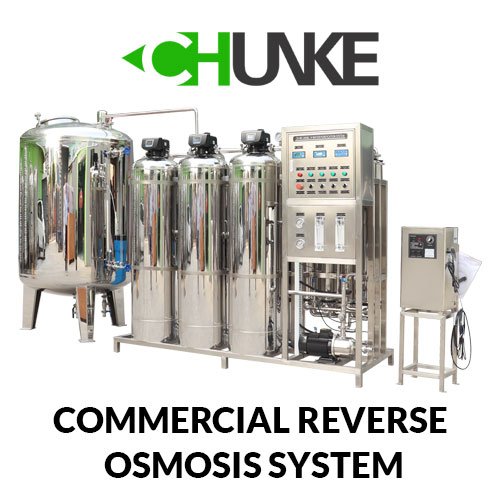
Let’s check 1000 liter RO Plant Price: In today’s market, the demand for clean and purified water is on the rise, especially in commercial and industrial settings. One of the most efficient and effective methods of water purification is through the use of a commercial reverse osmosis (RO) plant. In this article, we will delve into the details of a 1000 litre per hour RO plant, its price, and how it can benefit businesses.
Understanding the Commercial RO Plant 1000 LPH
The commercial RO plant with a capacity of 1000 litres per hour is specifically designed to meet the water treatment needs of various industries and businesses. This system is capable of purifying a significant amount of water, making it suitable for large-scale operations. Whether it’s providing drinking water for employees or serving as process water for industrial needs, the 1000 LPH RO plant is a versatile solution.
Factors Affecting the Price of Commercial RO Plant 1000 LPH
The 1000 liter RO plant price can vary depending on several factors. These factors include the brand, quality, additional features, and after-sales services provided. It’s important to consider these factors when determining the budget for a 1000 LPH RO plant. Let’s take a closer look at each of these factors:
1. Brand Reputation and Quality
When it comes to investing in a commercial RO plant, it is crucial to choose a reputable brand known for manufacturing high-quality water treatment systems. Brands with a proven track record, such as Chunke, who has 20 years of experience in producing reverse osmosis systems, can provide reliable and durable equipment. However, it’s important to note that reputable brands may come with a higher price tag.
2. Additional Features and Customization
Some commercial RO plants come with additional features and customization options. These features can include advanced filtration systems, automated controls, and monitoring systems. The inclusion of such features can add to the overall price of the system. However, it’s essential to assess the specific needs of your business to determine if these additional features are necessary.
3. After-Sales Services and Support
Investing in a commercial RO plant involves more than just purchasing the system. It’s essential to consider the after-sales services and support provided by the manufacturer or supplier. These services can include installation, maintenance, and troubleshooting support. Opting for a supplier that offers comprehensive after-sales services can ensure the long-term efficiency and functionality of the RO plant.
Price Range of Commercial RO Plant 1000 LPH
The price of a commercial RO plant with a capacity of 1000 litres per hour can vary depending on the factors mentioned above. Here is a general 1000 liter RO Plant price range to give you an idea:
Basic Model: The basic model of a 1000 LPH RO plant, which includes the system without storage tanks, transport, or installation, can start from around 2.000USD. This model typically comes with a warranty on the panel board and dosing pump.
FRP Tanks with RO Skid: FRP tank with RO skid 1000 LPH RO plant, which includes sand and carbon filter tanks and installation, can start from around 2.400usd. Hence, this model typically comes with a warranty on the panel board, pumps, and dosing pump.
Stainless Steel with RO Skid: For businesses seeking the highest quality and performance, a top-quality 1000 LPH RO plant can cost around 3500usd. So, this price includes installation, delivery, and storage tanks.
CHUNKE 1000 Liter RO Plant Price
It’s important to note that these prices are approximate and can vary based on the specific requirements and customization options.
How Does a Reverse Osmosis Plant Work?
To understand the value and functionality of a commercial RO plant, it’s essential to grasp the process of reverse osmosis. As, reverse osmosis is a water purification process that involves the removal of dissolved solids and impurities from water using a semi-permeable membrane.
The process begins with a raw water pump that supplies the water to the system. So, the water then passes through a series of filtration stages, including a sand filter and a carbon filter. Hence, these filters remove suspended particles, chlorine, and other organic matter, improving the overall water quality.
After the pre-filtration stage, an anti-scalant dosing system is incorporated to prevent the formation of scale on the membrane. This step helps to prolong the life of the RO membrane and maintain its efficiency.
The microfiltration stage is where the heart of the reverse osmosis process occurs. High-pressure pumps are used to push the water through the RO membrane, which acts as a barrier, allowing only pure water molecules to pass through while leaving behind dissolved solids, salts, and impurities. This process results in the production of purified water.
To monitor the quality of the treated water, an online device is included in the system. This device ensures that the water meets the desired standards and is suitable for the intended applications.
1000 Liter RO Plant Price Parts
Raw Water Pump: A raw water pump is used to provide a constant supply of water to the system. The pump ensures sufficient inlet pressure for smooth operation. We are using Grundfos and CNP pumps mostly.
Pretreatment Parts
Sand Filter: The raw water passes through a pressure sand filter to remove any turbidity or suspended particles. This filter offers filtration up to 30 microns, ensuring the water is free from visible impurities.
Carbon Filter: After passing through the sand filter, the water flows through a carbon filter. This filter helps remove organic matter, chlorine, and other chemicals that may affect the taste and odor of the water.
Anti-Scalant Dosing System: In cases where the feed water has high turbidity, a settlement tank and an alum dosing system may be incorporated to enhance the water treatment process. So, the anti-scalant dosing system helps prevent scaling on the membranes, ensuring their optimal performance.
Micro Filtration: The treated water then undergoes microfiltration, which further removes any remaining suspended particles and colloidal matter. Hence, this step helps improve the clarity and quality of the water before it enters the RO system.
RO Skid Parts
High Pressure Pump: The microfiltered water is pressurized using a high-pressure pump. So, this pump applies the necessary pressure to overcome the osmotic pressure and push the water through the RO membrane.
RO Membrane: Heart of the RO system is the membrane. So, the semipermeable membrane selectively allows water molecules to pass through while blocking dissolved solids, contaminants, and impurities. This process results in purified water on one side of the membrane, known as the permeate, and concentrated wastewater on the other side, known as the reject stream.
Product Water: The permeate, or the purified water, is collected and stored for use. So, this product water is free from harmful dissolved solids and contaminants, making it suitable for various applications, including drinking, cooking, and industrial processes.
Advantages of a Commercial RO Plant 1000 LPH
Investing in a commercial RO plant with a capacity of 1000 litres per hour can provide numerous advantages for businesses. Here are some key benefits:
1. Cost-Effective Water Treatment
A commercial RO plant offers a cost-effective solution for water treatment compared to alternative methods. So, it eliminates the need for purchasing bottled or pre-treated water, reducing long-term costs.
2. High-Quality Purified Water
The reverse osmosis process ensures the production of high-quality purified water, free from harmful contaminants, bacteria, and impurities. Hence, this makes the water safe for drinking, industrial processes, and other applications.
3. Versatility and Customization
Commercial RO plants offer versatility in terms of usage and can be customized to meet the specific requirements of different industries. Whether it’s a hotel, hospital, or manufacturing facility, the 1000 LPH RO plant can be tailored to suit the unique needs of the business.
4. Environmental Sustainability
By investing in a commercial RO plant, businesses contribute to environmental sustainability by reducing the consumption of single-use plastic bottles. So, the system provides a continuous supply of purified water, reducing the reliance on single-use containers.
5. Reliability and Longevity
The longevity of a water treatment plant is crucial to ensure uninterrupted operations and cost-effectiveness. The 1000 LPH RO plant is built with high-quality materials and components, ensuring its durability and long lifespan. So, this reduces the need for frequent maintenance and replacement, saving businesses valuable time and resources.
6. Efficient Purification
The 1000 LPH RO plant utilizes reverse osmosis technology, which effectively removes dissolved solids, impurities, and contaminants from the water. So, with a rejection rate of up to 99%, this system ensures that the treated water is of high quality, making it suitable for various applications, including drinking, process water, and industrial use.
Conclusion
The 1000 LPH RO plant is an essential water treatment solution for businesses and industries seeking reliable and cost-effective purification. With its efficient filtration process, low electricity consumption, and longevity, this system provides high-quality purified water for various applications. So, understanding the price, features, and working principle of a 1000 LPH RO plant is crucial for making an informed decision and ensuring the long-term success of your water treatment operations. Meanwhile, remember to choose a reputable supplier like Chunke to benefit from their expertise and quality products.

